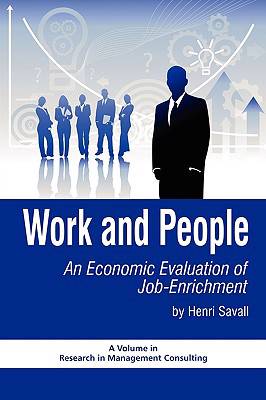
- Retrait gratuit dans votre magasin Club
- 7.000.000 titres dans notre catalogue
- Payer en toute sécurité
- Toujours un magasin près de chez vous
- Retrait gratuit dans votre magasin Club
- 7.000.0000 titres dans notre catalogue
- Payer en toute sécurité
- Toujours un magasin près de chez vous
Description
The reprint of Henri Savall's classic Work and People, originally published in French in 1974, is part of the Research in Management Consulting series effort to look backward as well as forward in examining trends, perspectives, and insights - especially from different countries and cultures - into the world of management consulting. Savall's insights into the complexity of organizational life were groundbreaking, articulating the need to examine both economic and social factors as part of the same analysis, assessing technical and behavioral patterns through the lens of an integrated framework. As he has argued, there is a double-loop interaction between "the quality of functioning and economic performance," and underestimating this socio-economic "tension" leads inevitably to reduced performance and losses, which he refers to as "hidden costs."
This approach, referred to as the socio-economic approach to management (SEAM), has significant potential for our thinking about organizational diagnosis and intervention. As Savall emphasizes, the North American tendency to cast people as human "resources" misses the essential point that human beings cannot be considered as simply another resource at the organization's disposal. People are free to give or withhold their energy as they desire, depending on the quality of formal and informal contracts and interactions they have with their organizations. As such, the SEAM approach focuses on human "potential," underscoring the need for managers and their organizations to create the conditions under which people will want to maximize their talents on behalf of the organization.
Work and People focuses on the ramifications of this reality, as dysfunctions - the difference between planned and emergent activities and functions - can quickly lead to a series of costs that are "hidden" from an organization's formal information systems (e.g., income statements, balance sheets, budgets). As his insightful work underscores, as organizations begin to accumulate dysfunction upon dysfunction, they inadvertently undermine their performance and create excessive operating costs, with lower productivity and less efficiency than they could achieve. As readers will discover, the frameworks, tools and ways of thinking about organizations, people and management in this volume - in essence the background to the socio-economic approach to organizational diagnosis and intervention - continue to hold great promise for our attempts to create truly integrative approaches to management and organizational improvement efforts.
Spécifications
Parties prenantes
- Auteur(s) :
- Editeur:
Contenu
- Nombre de pages :
- 296
- Langue:
- Anglais
- Collection :
Caractéristiques
- EAN:
- 9781607524335
- Date de parution :
- 16-02-10
- Format:
- Livre broché
- Format numérique:
- Trade paperback (VS)
- Dimensions :
- 156 mm x 234 mm
- Poids :
- 417 g

Les avis
Nous publions uniquement les avis qui respectent les conditions requises. Consultez nos conditions pour les avis.






